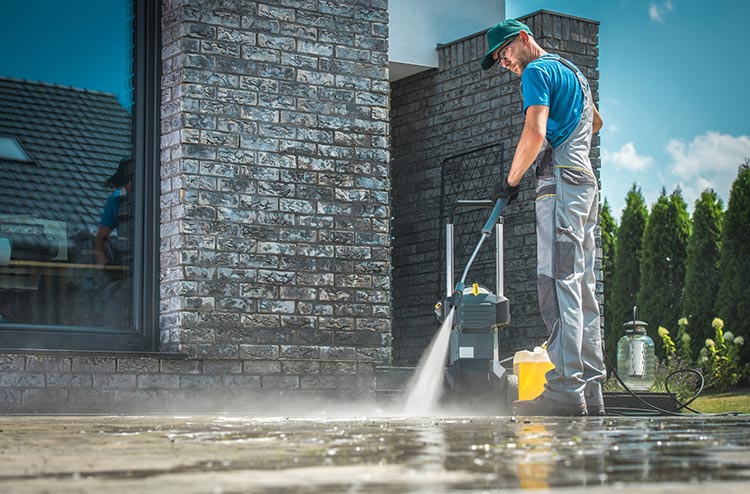
Pressure washing is a highly effective cleaning method that uses high-pressure water to remove dirt, grime, mold, algae, and other unwanted substances from a variety of surfaces. Widely utilized in residential, commercial, and industrial applications, Pressure washing Niceville FL it has become an essential tool for maintaining cleanliness, enhancing aesthetics, and ensuring the longevity of various materials. This method is not only efficient but also adaptable to numerous surfaces, making it a preferred choice for property maintenance.
One of the primary advantages of pressure washing is its versatility. It can be used on a wide range of materials, including concrete, wood, brick, vinyl, and metal. For residential purposes, driveways, patios, sidewalks, and decks often accumulate layers of dirt, oil, and organic growths that are challenging to remove with standard cleaning methods. Pressure washing provides a deep clean, penetrating surfaces to eliminate these substances effectively. Wooden decks, for instance, often develop algae and mold due to exposure to moisture, which can make them slippery and unattractive. A pressure wash not only removes these hazards but also prepares the surface for sealing or staining, extending its lifespan.
In addition to its cleaning power, pressure washing significantly improves the appearance of properties. Over time, exteriors such as siding, fences, and roofs accumulate dust, mildew, and cobwebs, which can make a building look aged and neglected. By restoring these surfaces to their original state, pressure washing enhances curb appeal, which is especially important for homeowners preparing to sell or rent their property. Commercial establishments also benefit greatly from maintaining a clean and inviting exterior, as it leaves a positive impression on customers and clients.
Beyond aesthetics, pressure washing plays a critical role in preserving the structural integrity of buildings and other surfaces. Dirt, mold, and algae can cause gradual deterioration if left untreated. For example, mold growth on wood can lead to rot, while algae on concrete can result in cracks due to trapped moisture. Regular pressure washing prevents these issues, minimizing the need for costly repairs or replacements. In industrial settings, it is invaluable for removing harmful residues that could corrode machinery or compromise the safety of infrastructure.
Safety is another important factor when considering pressure washing. Slippery surfaces caused by oil, algae, or mildew are common hazards that increase the risk of accidents. For walkways, driveways, and other high-traffic areas, pressure washing provides a thorough cleaning that eliminates these risks, ensuring a safer environment for pedestrians. Businesses, in particular, benefit from this cleaning method as it helps them comply with safety regulations and maintain a secure setting for employees and customers.
To achieve optimal results, it is essential to use the right equipment and techniques during pressure washing. A pressure washer operates by using a motor or engine to drive a pump, which forces water through a high-pressure nozzle. These nozzles come in various types, allowing users to adjust the spray intensity and pattern according to the surface being cleaned. For delicate surfaces such as wood, a wide spray nozzle is recommended, while a narrower spray is suitable for tougher stains on concrete or metal. Proper handling of the equipment is crucial to avoid damage, as the force of the water can erode softer materials or strip paint if used incorrectly.
For individuals unfamiliar with pressure washing, hiring professional services can be a practical solution. Professional cleaners have the expertise, tools, and experience to handle different cleaning challenges effectively. They can determine the appropriate water pressure, temperature, and cleaning agents for specific surfaces, ensuring a thorough and safe cleaning process. This is particularly beneficial for large-scale projects or complex surfaces, where professional-grade equipment and skills are necessary.
Environmental concerns are becoming increasingly relevant in the context of pressure washing. While the process is water-intensive, modern pressure washing systems have incorporated eco-friendly features to reduce water usage and minimize environmental impact. Some equipment is designed to recycle water, while others use biodegradable cleaning agents that are less harmful to the environment. Additionally, many regions have regulations regarding wastewater disposal, requiring users to capture and properly manage runoff to prevent pollution of local water sources.
In residential settings, pressure washing is often used as part of routine property maintenance. Annual cleaning sessions can prevent the buildup of harmful substances and keep outdoor areas looking their best. For example, cleaning gutters and roofs with a pressure washer can help prevent water damage caused by clogged drainage systems. Similarly, washing outdoor furniture and playsets keeps them safe and appealing for use.
Pressure washing is also invaluable for preparing surfaces for renovation or painting. Removing old paint, stains, or debris ensures a clean and smooth surface for new applications, improving adhesion and the overall quality of the final result. This is especially useful for projects like repainting a home’s exterior or resealing a driveway, where a clean surface is critical for longevity.
In conclusion, pressure washing is a powerful, versatile, and environmentally adaptable cleaning method that offers numerous benefits for residential, commercial, and industrial applications. By removing dirt, mold, and other contaminants, it restores the beauty and safety of surfaces while preventing long-term damage. Whether it is used for routine maintenance, safety improvements, or surface preparation, pressure washing continues to be a valuable tool for keeping properties clean, functional, and visually appealing. Proper technique and equipment, combined with environmental responsibility, ensure that this method remains a sustainable and effective cleaning solution.
